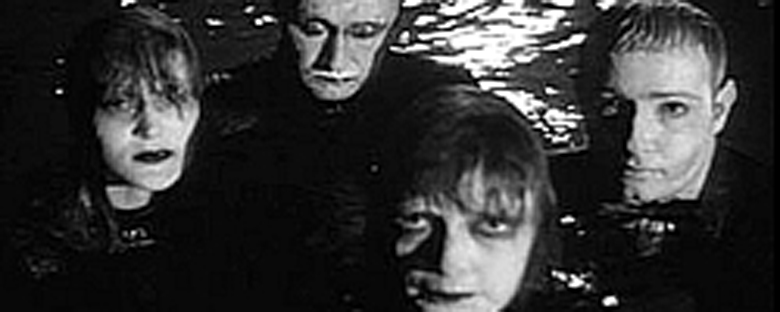Reviews
Herk Harvey
USA, 1962
Credits
Review by Jenny Jediny
Posted on 23 October 2005
Source The Criterion Collection DVD (Director’s Cut)
Related articles
Features: 31 Days of Horror
Carnival of Souls is a rare occurrence, one in which shoddiness and schlock characterize a film with genuinely creepy moments and an artful, idiosyncratic visual landscape. In the liner notes on the Criterion disc, it is mentioned that director Herk Harvey sought to evoke the essence of Bergman and Cocteau—a lofty homage, being as this is the industrial/educational filmmaker’s sole feature film. It is easy to discern the European influence in the film’s constructed (if slightly superficial) themes ranging from religious skepticism to a strange concoction of surrealist images and existentialist philosophy. Carnival even touches lightly on the film canon historically, with sets out of German Expressionism; a cavernous church with its monstrous organ, the lonely beach at Great Salt Lake, and almost elegant carnival grounds, the Saltair, with its oversized slides, tunnels, and dance floor set for the danse macabre the heroine finds herself magnetically drawn to.
Our shaken heroine is Mary, sole survivor from the film’s opening car crash. Like other tortured blondes in the fashion of Janet Leigh or Mia Farrow, Mary is alone in her fears, a little high strung at times, and menaced by men, ranging from her perverted neighbor across the hall to the sinister man in the suit, randomly popping up in car windows or her boarding house hallway, unseen by anyone but her. Aside from seeing ghouls Mary has spells, spooky episodes that are effective in their uncluttered design. The spells are indicated by little more than a chime as the image becomes momentarily wavy, with no indication as to why or how we have suddenly entered an alternate universe. The soundtrack ceases, and Mary walks about in confusion, wondering why no one can hear her perplexed voice. How irritating for Mary, shopping for a little black dress (hopefully to replace the Puritan sack she wears incessantly), to suddenly find herself literally invisible among her fellow consumers. Mary is a puzzling person in general; with no apparent history or contacts, an ability to pull herself out of a lake untouched, when the car she crashed with has been submerged for three hours, and then motivation to clear out of Kansas for Utah days later, she is focused and driven but to what? Her quest seems to connect to far more than her employment as an organist, as she relentlessly questions everyone she meets in Utah about those empty carnival grounds.
With its odd concoction of elements Carnival is a kind of horror bricolage. Watching zombies rise from the lake and follow Mary presages Night of the Living Dead, the church scenes might be in a Lon Chaney film, certainly an old German silent film, and the warped small town behavior — along with Mary’s subconscious psychosexual urges — is now evocative of the work of David Lynch. Mary’s confusion seems to root itself in what her frustrated suitor Mr. Linden deems frigidity (although he sarcastically calls it “class” the first two times she turns down his requests for a date), but she is all excitement near the abandoned carnival grounds, and during an organ practice that enrages the church minister with sacrilegious playing. Some pop psychology is offered, but rather tongue-in-cheek as Dr. Samuels attempts to question and analyze Mary with the straight-faced assurance that he is simply a medical doctor, not a therapist. It is possible to offer some conjecture involving Mary’s vocal rejection of the church, her aversion to men and sex, and her supposedly steamy organ playing (to the untrained organ ear, namely my own, it simply sounds a bit warped and trippy), and when she falls into a trance seemingly controlled by the mysterious man in the suit. But it feels unnecessary to analyze too much, mainly since Carnival’s long endurance as a cult classic stems from its enigmatic and crafted aura. Certainly the script is incredibly wooden, as well as much of the acting, but it keeps the film off key and peculiar, in ways that captivate in the mind. “The brain has corridors — surpassing — material place” (so says Emily Dickinson) and it is the beautiful, haunting atmosphere in Carnival that leaves such a lasting impression.
We don’t do comments anymore, but you may contact us here or find us on Twitter or Facebook.



